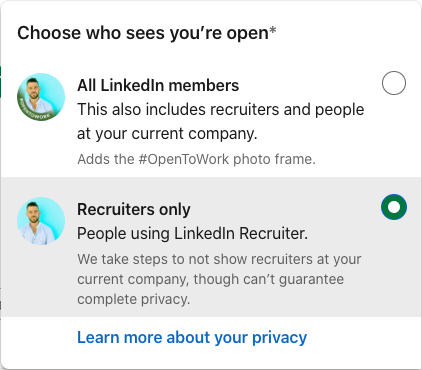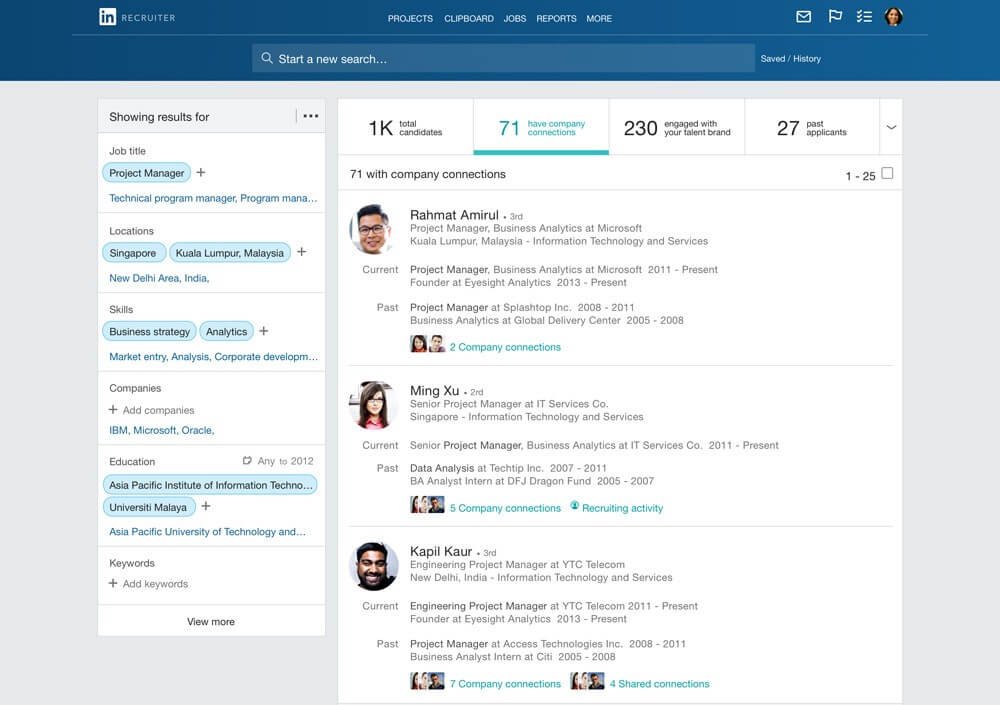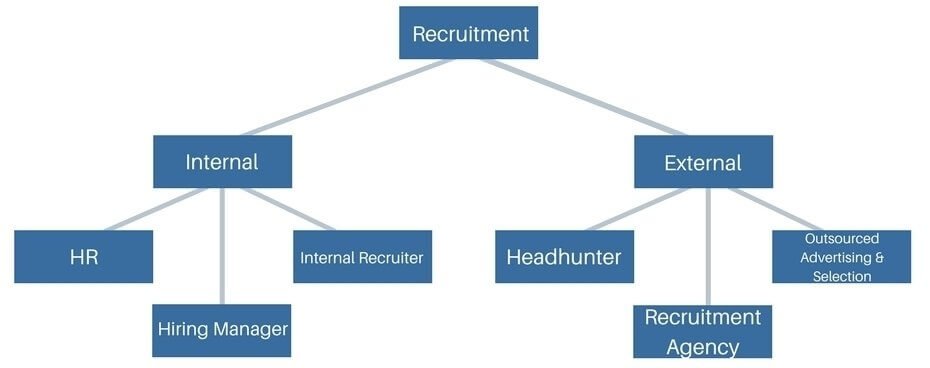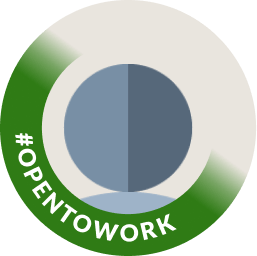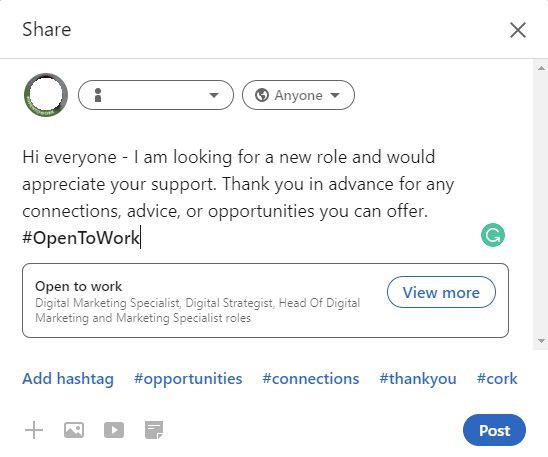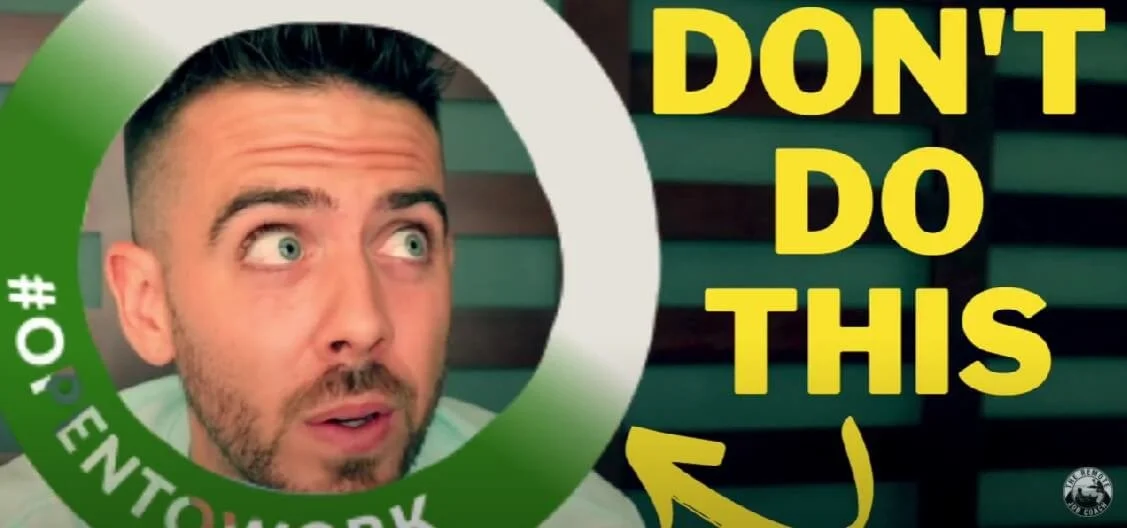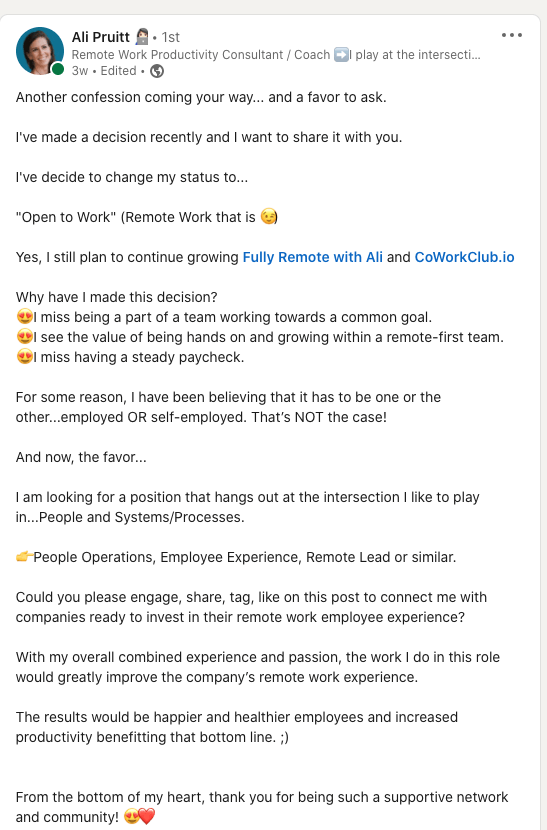The Ultimate Guide to Being #OpenToWork on LinkedIn
Ahhhh The LinkedIn #OpenToWork photo frame.
A topic almost as divisive as well, everything these days…
In this article, I'm going to go over the differences between being open-to-work to recruiters only vs being open-to-work for everyone with the green photo frame.
I'll also talk about the potential pros and cons of using the photo frame. As well as exclusive insights from a number of amazing recruiters and hiring managers who were so nice to let me bother them.
By the end of this article, you'll know everything you need to know to decide whether to slap that photo frame around your diabolically handsome or wildly beautiful face.
What Does it Mean to Be OpentoWork on LinkedIn?
First, you need to understand what it means to be #OpenToWork on LinkedIn.
At the moment there are two options in your settings to be #OpenToWork on LinkedIn:
Open-to-Work for Recruiters Only (without the Photo Frame).
Open-to-Work for All LinkedIn Members (with the Photo Frame).
LinkedIn Open to Work Options
There are big differences and implications for choosing one over the other, so pay close attention.
OpentoWork "Recruiters Only" (No Photo Frame)
Choosing Open to Work Recruiters Only
Open-to-work "recruiters only" means that your job-seeking preferences will only be shown to those on LinkedIn who are using a LinkedIn recruiter account.
These are premium accounts that either individuals or companies pay for to help them search, find, and contact potential job seekers in one interface.
Screenshot of LinkedIn Recruiter
When you're open-to-work for recruiters only, LinkedIn also does its best to shield your profile from anyone at your current company who has a LinkedIn recruiter account. That way, they won’t know you're looking for new work.
Having said that, there are a few variables worth mentioning:
There are multiple types of recruiters, whether in-house or agency recruiters. As such, motivations and perspectives vary among recruiters as they're reaching out to you about a specific position.
Different Types of Recruiters Example
There are different versions of LinkedIn recruiter with a range of features and functionalities that vary in cost. From about $120 per month for the Lite version to over $800 per month for the corporate version.
Last but not least, not all talent professionals or recruiters on LinkedIn have access to any version of LinkedIn recruiter. Mostly because it's expensive or their hiring needs don't justify it.
I tell you all this not to confuse you, but so you understand the discrepancies involved in who may or may not see that you're looking for work.
A number of the recruiters I spoke to, who have access to LinkedIn recruiter, mentioned that the photo frame didn't matter to them:
Ray Marks, the founder of the tech recruiting firm Marks Connect said:
"With LinkedIn Recruiter I search for candidates that have toggled on that they're "Open to Work" (unrelated to the photo frame). I believe the photo frame is purely for aesthetic purposes but it's not something that I look for or can search for."
Jasmine Turner a technical source at Docusign said:
"I start off my initial search with "open to work" candidates because they are more likely to respond. But you don't have to have it on your linked In profile picture, no one pays attention to that."
Now, let's talk about the other option.
OpentoWork to Everyone (Photo Frame)
Choosing Open to Work to Everyone
The Open-to-Work for all LinkedIn members is pretty self-explanatory.
When you click on that option, a little green circle appears around your LinkedIn profile picture. Now everyone on LinkedIn knows you're looking for work.
Open to Work Photo Frame
It will also prompt you to post on LinkedIn with a generic "I'm looking for work, can you help" type of post.
Generic LinkedIn Post
#OpenToWork in 2022 vs 2020
Before we go any further, it's time to talk about the elephant in the room.
In July of 2020, I created an initial video about this topic where I heavily opposed the LinkedIn Open-to-Work Photo Frame.
This video has over 40k views, a 91% like ratio, and hundreds of supportive comments.
But, understandably, the video also caused a stir. It was a polarizing and counter-intuitive take that many people didn't agree with.
To give more context, it was around the peak of the pandemic that LinkedIn came out with this feature. Giving people the ability to tell everyone they were looking for work. Naturally, it seemed like a good idea for many people.
But here was the issue that I had with it:
I saw job seekers left and right rush to put up their photo frames, fill out their headlines with "seeking new opportunities", and use the generalized post to ask their network for help.
The Abhorrent “Seeking New Opportunities” Headline
They did so without consideration to what their profile looked like, how specific they were in articulating their value, and how to inform their network & recruiters of what they were actually looking for.
They just slapped the frame on their profiles, then sat back and waited for the phone to start ringing.
I'm not saying everyone did this, but many did. To be honest, I didn't do the best job in my last video clarifying this point.
My main concern for job seekers is the faulty thinking that availability is their selling point or being open-to-work IS their value, instead of their actual tangible skills and the benefits they could provide an organization.
When I made the last video in mid-2020, during record unemployment, the act of leading with being open-to-work as a value point essentially commoditized job seekers in an extremely difficult job market.
I've listened to the feedback I received on my last video, watched the shift into a candidate-driven market, and seen evidence that convinced me to update my article.
To provide a more complete scope of information for job seekers who want to put themselves on the market.
My opposition to the open-to-work photo frame has softened with time because I've seen many job seekers, especially recently, use the photo frame with success.
There are still reasons I think you should be cautious of using the photo frame, which I'll discuss in a bit. First I want to talk about why you might choose to use the photo frame and the factors that are crucially important in its success if you do choose to do it.
Potential Pros of the #OpenToWork Photo Frame
To set the stage, the job market today is radically different than 2 years ago. We're in a candidate's market as a result of the adoption of remote work, the recovery of the economy, and the great resignation.
Many stigmas that plagued the job search market have seemed to wither away. The unemployment rate in the US is down to 3.8% compared to the peak of COVID which was almost 15%.
Because so many people were either affected by job loss or knew someone close to them who was, the world just seems to be more empathetic when it comes to the job market. The nature of the community on LinkedIn has never been stronger in helping job seekers.
The open-to-work photo frame can be a way for you to receive that help from others if you're intentional with how you use it, you've optimized your LinkedIn profile, and you do a good job of articulating your value.
Nicole Fernandez, a recruiter at WIX noted:
"When I am scrolling through LinkedIn, folks with a green banner stand out and I am often drawn to check out their profile to see if there is a fit for any of my roles. In my day to day, I am mostly working in the ATS system and headhunting on the backend of LinkedIn so the photo frame becomes less relevant."
Some early statistics in 2020 from LinkedIn also showed positive results from the photo frame when it comes to the likeliness of receiving messages from your network.
Beyond that, the really cool shift I've seen in the past two years is that many people are now more comfortable doing their job search very publicly.
JD Alex a talent researcher and technical sourcer at Stripe echos this sentiment. He says:
I love the “Open to Work” photo frame! It makes a part of my job easier and it’s just one more tool to use as a jobseeker when searching for a job. I don’t know why there is so much pushback from all the “career coaches” and “influencers” about the subject.
Ouch JD.
Honestly, JD is someone who I highly respect on LinkedIn. Listening to his opinion was one of the reasons I remade this article. He did also share that when people are looking for work and using the photo frame — it can't end there.
From my observation, the photo frame users that seem to be having the most success are those who are posting very specifically about what they want. These people often have an in-demand role as well.
That creates a dynamic where they have companies and their network lining up in the comment sections of their posts to help get them connected to open opportunities.
This isn’t to say the open-to-work frame won't help you if that doesn't sound like you, or if you don't post on LinkedIn.
Again, my point is flashing on your #opentowork frame isn't necessarily the causation of success in your search. It's likely part of a mix with other high-leverage job searching activities, like networking and personal branding.
I've still been unable to find any conclusive stats comparing the success of open-to-work for recruiters only vs. open-to-work for everyone. There's still a lot of nuance in this discussion.
How the #OpenToWork Photo Frame Might Work Against You
I mentioned I was going to discuss a few reasons to be cautious about the photo frame. Here they are, for your consideration:
First, the obvious one. If you don't want your current employer to find out you're searching for a new job, the photo frame would make sure that you will have a bad time.
If you're open-to-work for everyone, you do open up your job-seeking preferences to potential scammers and spammers. A Better Business Bureau study on fake job scams reports that an estimated 14 million people are exposed to employment scams every year, with $2 billion in direct losses annually. Always confirm the legitimacy of people who are reaching out to you with job offers. Here are my 5 Ways to Spot Work From Home Scams, which you can save to watch for later.
If your profile isn't optimized it can draw the wrong type of attention and confuse people. Making sure your profile is well articulated before you turn on the photo frame is essential.
The last one is Bias! While many of the factors I mention have changed for the better recently, bias hasn’t. There are multiple levels of conscious and unconscious bias that job seekers contend with. Both within your network and with recruiters.
Bias in Your Network
With bias in your network, think about it like this:
When you reach out to a friend in your network that you haven't talked to in years and you have the photo frame on, their automatic assumption might be that you're going to ask them for a favor.
That's not the worst thing that can happen, but it does potentially put you in a perceived lesser position of leverage in your interactions.
We want to believe that everyone we reach out to is going to be helpful, but some people might feel as if you're only reaching out because you want something from them.
However, their response can also be the reverse. They could react positively and be willing to help because they know you're looking.
Recruiter Bias
Bias with recruiters might center around their desire for passive candidates. Users of LinkedIn Recruiter have the advantage of seeing #opentowork candidates that the normal LinkedIn users can't. This can be a unique value proposition for these recruiters.
For example: If an agency recruiter is hiring for a company and they're submitting candidates, their ability to access candidates that only they have access to can be a selling point of their services.
These recruiters may have an actual incentive to select candidates who aren't so public that their clients could already see them for themselves.
Recruiters may also have a negative bias about the open-to-work frame in general.
Niki Woodall a data engineering recruiter at Meta said of the open-to-work frame that she's
"Overall neutral, but lean toward not being a fan. It does give off a subconscious vibe of desperation somehow. I won't disqualify for it, because I'm aware of this potential bias - but "top performers" typically just don't have to include this photo to get work."
Adam Broda, founder of Broda Coaching who's also a Sr. Hiring Manager who you'll often find posting valuable nuggets of wisdom on LinkedIn said:
"My preference is the "not visible" to the world if I'm being honest. I only recommend using it in a few instances. How often do you see people from top companies using that frame when they're searching for a job...it's not often."
Employment Gap Bias
The last piece of bias I want to talk about is employment gap bias. If you've had the photo frame up for a long time, people in your network may start to consciously or subconsciously judge you for that.
Fortunately, while there used to be a bigger stigma of unemployment, I believe this has gotten much better because the pandemic did a lot to change that.
Adam Posner of NHP Talent Group agrees... he said:
In the last two years, we have seen so much migration in the workplace, that being between jobs is more common than just being "unemployed" and the stigma is changing for the better. Recruiters should and mostly are more open to hearing the WHY behind not working vs. just dismissing people based on not currently working. [his face role, and quote on screen - Adam Posner - Founder and President of NHP Talent Group]
I'm not saying these things are right or good, but this is sometimes how humans act, and it's great to see that things are getting better. My goal is to tell you my opinion, show you the opinions of other smart people, and learn from yours. I urge people to think about this information critically and make the best decision for themselves.
What Other Ways Can I Tell people I'm Open to Work on LinkedIn?
Whether or not you choose to use the photo frame or be open to recruiters only, the resounding feedback I've received, and known to be true for my clients, is that there are so many factors that play into the success of your job search.
Here's how to double down and make sure you're in the best position possible, whichever choice you make.
1. Optimize Your LinkedIn Profile First
Your LinkedIn is free real estate for your personal brand. It's SEO optimized based on the keywords you have in your profile, which allows you to rank higher in recruiter searches.
Start with your LinkedIn headline, where you have 220 characters to use. Be focused on your skills and articulate your value through targeted keywords. Don't say #OpenToWork or "Seeking New Opportunities" in your headline, it's a waste.
Make sure your LinkedIn profile’s about, featured, experience, endorsements, and settings all reflect the types of roles you're looking for.
Fanny Dunagan, employer branding and marketing lead at Delaware, North America believes a person's profile picture matters when choosing people to do business with:
"The main thing is their photo is professional, looking at the camera, friendly-looking. Try to smile. I'm not sure why some people choose grumpy-looking photos of themselves."
You heard Fanny. A good photo makes a great first impression.
If you need more help with optimizing your LinkedIn profile, here are a few free resources that you can download:
2. Send Personalized Messages to Linkedin Connections You Already Know
This is my number one most recommended strategy when you start a job search.
Why? Because personalizing a message to each individual you reach out to can dramatically increase your response rate. It will take more time to do, but people appreciate thoughtful high-quality messages.
First, make a target network list. Create messaging that's personalized based on your previous interactions with the person, and tell them exactly how they may be able to help you. Always try to also provide value to them when you can.
3. Publish a Targeted Post on LinkedIn
The generic open-to-work post-LinkedIn provides is not good. It's impersonal and is meant to be a jumping-off point, but misses some critical information.
Whether you're open-to-work for everyone or just for recruiters, you can still create a targeted public post that is much more effective.
One of my friends and clients, Ali Pruitt, published a very vulnerable and targeted post about her search for remote work. Within two weeks of that post, she had 4 job opportunities.
Ali’s Targeted Post on LinkedIn
Eventually, she accepted a fully remote position. All without using the open-to-work photo frame.
A LinkedIn post about your job search should at least have these common attributes:
A clear role you're looking for
Keywords and skills that pertain to that role, and the amount of experience you have
A potential industry you want to work in
Various achievements and metrics
A call to action to anyone reading it
Write your post as if you're selling yourself and be solution-focused. Companies are hiring to solve one of their business problems. To get hired you have to prove yourself to be the solution.
4. Be More Active on LinkedIn
Follow your target companies, engage with their posts, and connect with their employees.
Always respond to legitimate recruiters when they reach out even if what they send is not a good fit for you. Try to help them find someone who is a good fit, and let them know what you're looking for.
These actions will help you show up higher in the algorithm when recruiters are searching.
If you want more help networking on LinkedIn, check out my Free LinkedIn Networking Quick Guide.
Conclusion - Should You Use #OpentoWork on LinkedIn?
I hope I've done a good job of delivering a full scope of information to help you make a decision. Ultimately it's up to you do to what feels best.
I will say this:
When it comes to using LinkedIn only open to recruiters, I recommend that with a resounding YES for everyone.
I'd actually consider keeping it on year-round for casual looking, even if you're happy in your job.
Why?
The COVID-19 pandemic showed us how fragile the job market is. Layoffs from companies happen all the time, and we repeatedly see how unpredictable careers can be. You never know what will happen.
Creating contacts with recruiters all the time, even when you don't need them, is like digging your well before you're thirsty. It's the only way to guarantee you'll stay hydrated.
If you're going to use the open-to-work photo frame, there have been plenty of job seekers who have used it successfully.
In any case, please make sure your LinkedIn profile is optimized and heed some of the cautions I explained earlier.
At the end of the day, it's not necessarily the tool itself as much as how you use it which is most important.




